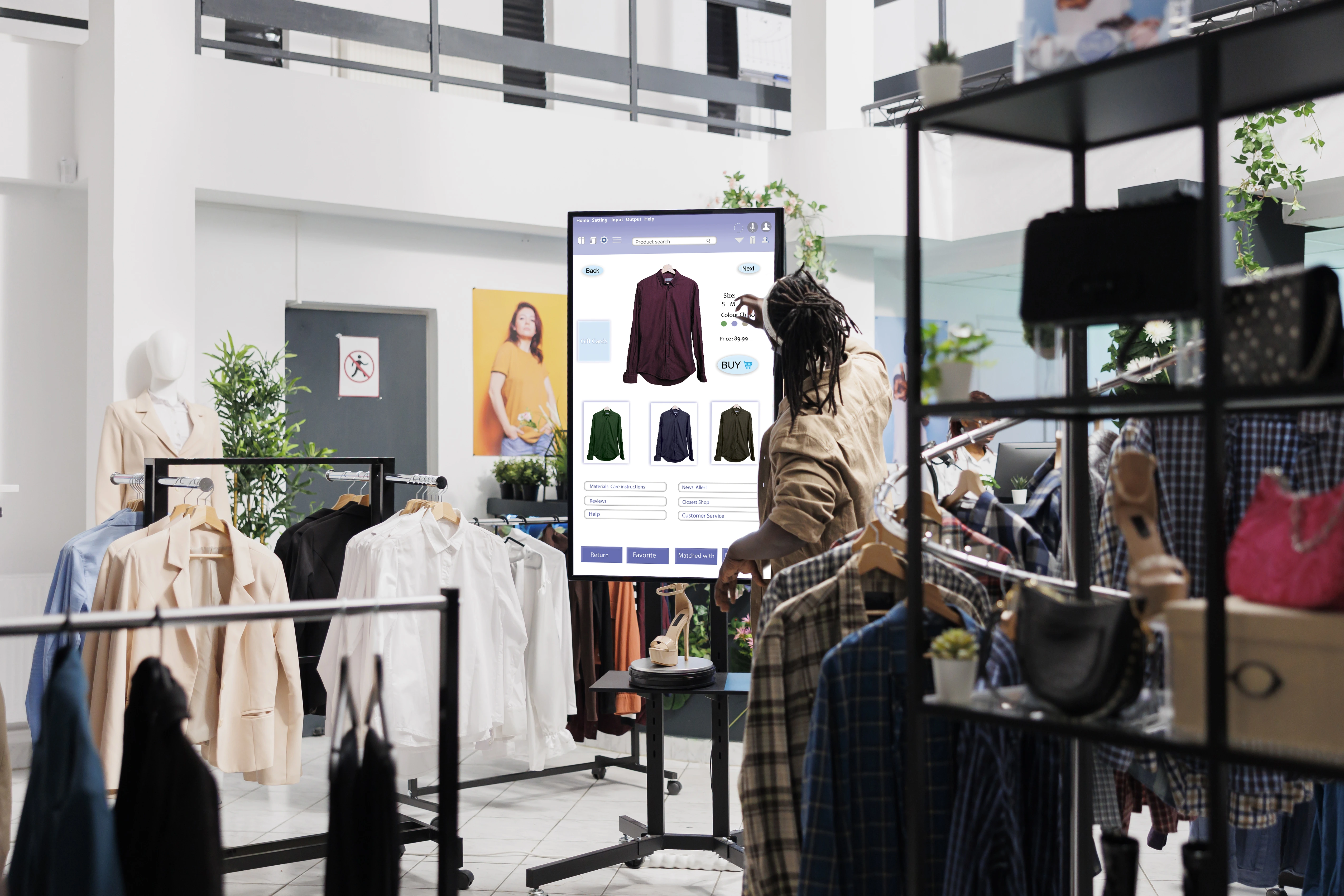
Social media marketing for retail brands is the centerpiece of digital growth in 2025. With global retail e-commerce projected to near $8 trillion by 2028 and social commerce now accounting for nearly one in five online purchases, retail teams can no longer afford to treat social media as secondary to their storefront or marketing mix. Platforms like Instagram, TikTok, and Pinterest have evolved into dynamic engines for visibility, loyalty, and direct sales.
Social media is no longer just a communication channel—it’s a digital storefront, customer experience hub, and sales platform. According to Statista, global retail e-commerce sales reached $6 trillion in 2024 and are expected to rise by more than 30% by 2028, surpassing $8 trillion. This growth is largely driven by the convergence of social media and e-commerce, where discovery, engagement, and conversion now happen in the same scroll.
Retailers today use social platforms to nurture communities, launch products, and deliver personalized shopping experiences—all without requiring the customer to leave the app. Whether it’s live-streamed product drops or shoppable reels, social media marketing has become the growth engine that drives modern retail success.

Social media marketing for retail brands is the strategic use of digital platforms to connect with customers, tell a brand story, and drive measurable sales. It blends storytelling, user-generated content, influencer partnerships, and integrated commerce into a unified strategy.
A strong retail social media strategy focuses on three key pillars:
This approach merges the emotional appeal of brand marketing with the performance focus of digital commerce, helping retail brands strengthen both loyalty and lifetime value.
Retail is one of the most competitive sectors online. With billions of active users on social platforms, brands gain unparalleled visibility by showing up consistently where their customers spend time. Short-form video, user-generated visuals, and interactive formats like Instagram Reels or TikTok challenges allow even small retailers to capture attention cost-effectively.
Creative retail content—such as behind-the-scenes clips, founder stories, and product demonstrations—drives reach and memorability far beyond traditional advertising.
Social media allows retail marketers to engage in real time, gather insights, and personalize experiences at scale. Platforms like Facebook, TikTok, and Instagram use powerful algorithms that surface content aligned to each user’s behavior, interests, and intent. This creates a continuous feedback loop where engagement data informs content creation, ad targeting, and even product development.
Personalized recommendations, interactive Q&As, and real-time replies build trust, making customers feel seen rather than sold to.
In 2025, the line between social and e-commerce has all but disappeared. Integrations with Shopify, BigCommerce, and TikTok Shop let retailers connect product catalogs, manage inventory, and enable instant checkout directly from social feeds.
This seamless journey—from product discovery to purchase—enhances convenience and conversion rates. It also helps unify analytics across web, app, and social touchpoints for a complete view of customer behavior.
User-generated content (UGC) and influencer collaborations have become key to building authenticity. Research from Emplifi shows that 65% of social users are more likely to buy when they see peer-created content compared to branded ads. By amplifying customer photos, testimonials, and real-life stories, retail brands can earn trust that paid media alone cannot achieve.
The most successful social retail campaigns make authenticity a core part of their content strategy—inviting customers to co-create, not just consume.
Let’s talk about how data, creativity, and performance strategy can drive real growth.
Partner with Future Digital to turn insights into measurable results.
Encourage customers to share experiences through hashtags, contests, and reviews. Reposting their content creates social proof and helps potential buyers envision themselves using your products.
Work with creators who share your values and audience. Micro-influencers, in particular, offer higher engagement rates and credibility than traditional celebrity partnerships.
Invest strategically in targeted ad campaigns across Facebook, Instagram, and TikTok. Use demographic and behavioral data to retarget warm audiences and optimize creative for click-through and conversion.
Make social content instantly shoppable by tagging products within posts or hosting live shopping sessions. These experiences drive impulse purchases and deepen customer engagement.
Gamify engagement with incentives that encourage followers to participate. This not only boosts visibility but also builds your first-party data for future campaigns.
Develop recurring content formats that spotlight your mission, people, and product innovations. Storytelling builds emotional connection and long-term loyalty.
Offer support directly via DMs and comments. Quick, empathetic replies transform social interactions into positive brand experiences.
Use AI tools like Sprout Social or Brandwatch to monitor sentiment, identify trends, and optimize content scheduling. Predictive analytics can reveal which product lines or visuals are likely to perform best.
Tailor campaigns around holidays, events, or local trends to drive both online and in-store sales. Geo-targeting helps national brands connect meaningfully with regional audiences.
Monitor comments, mentions, and competitor activity to stay ahead of shifts in consumer behavior. Social listening transforms raw feedback into actionable insights that guide creative and media planning.
Modern retail brands now integrate social activity directly with their e-commerce engines. Using Shopify and BigCommerce APIs, brands sync product data, track conversion metrics, and automate retargeting—all within their social dashboards.
This integration ensures that every social click contributes to measurable outcomes. By aligning campaign performance across platforms, marketers can calculate ROI, reduce cost per acquisition, and optimize ad spend based on actual purchase behavior.
Future Digital helps retail brands streamline these integrations and unify campaign analytics across paid, organic, and shoppable content to maximize performance visibility and long-term growth.

Nike continues to lead with emotional narratives like its “Just Do It” series and athlete collaborations. Their synchronized content on Instagram and TikTok ties seamlessly into the Nike app and online store, turning storytelling into sales.
Sephora’s #SephoraSquad campaign empowers real customers to share tutorials, reviews, and livestream sessions. This mix of UGC and influencer marketing fuels both loyalty and conversion.
Through its #AsSeenOnMe campaign, ASOS curates user-submitted outfit photos directly onto its product pages. This integration of content and commerce turns customers into brand ambassadors.
Starbucks leverages social platforms to amplify limited-edition launches like #RedCups. The brand combines user-generated photos with localized promotions to boost both digital orders and in-store visits.
These examples show how retail brands large and small can turn engagement into revenue by combining creativity, data, and customer connection.
Management and Scheduling: Hootsuite and Buffer streamline post scheduling, monitoring, and cross-channel reporting.
Content Creation: Canva and CapCut enable teams to design on-brand visuals and videos quickly.
Analytics and Listening: Brandwatch, Sprout Social, and Google Analytics 4 help measure performance, track sentiment, and link engagement metrics to revenue.
E-commerce Integration: Shopify and BigCommerce simplify product tagging, inventory syncing, and shoppable post management.
Influencer & UGC Platforms: AspireIQ and Yotpo support discovery, management, and tracking of creator partnerships and customer content.
Together, these tools empower retail teams to maintain consistency, automate workflows, and make data-driven marketing decisions.
According to Statista, global retail e-commerce sales reached $6 trillion in 2024 and are forecasted to exceed $8 trillion by 2028. Social commerce accounts for roughly 17% of all online sales, driven by mobile-first shopping, platform integrations, and real-time engagement experiences.
Social media marketing for retail brands is no longer a side tactic—it’s the backbone of modern commerce. The most successful retailers in 2025 will be those that blend creativity, authenticity, and analytics to create seamless, customer-first experiences across every digital touchpoint.
Brands that embrace data-led storytelling, shoppable content, and ongoing engagement can expect higher retention, stronger loyalty, and measurable revenue lift.
Future Digital helps retail and DTC brands turn engagement into measurable growth through paid media, social strategy, and performance analytics. Discover how to scale your next campaign with precision and creativity at Future Digital or explore our latest guide on Top TikTok Companies: How brands win in 2025.
What’s the best social media platform for retail brands in 2025?
Instagram and TikTok are leading platforms for visual storytelling and social commerce. Pinterest and YouTube remain valuable for evergreen discovery and brand education.
How do retailers make posts shoppable?
By connecting their e-commerce catalog via Shopify, BigCommerce, or TikTok Shop, brands can tag products directly in social posts and enable in-app checkout.
How is ROI measured in retail social media marketing?
Track engagement (likes, shares, comments), traffic (clicks, visits), and conversion (sales, revenue) through analytics tools like GA4, Brandwatch, and Sprout Social.
What are some tools for managing retail social media campaigns?
Hootsuite, Buffer, and Sprout Social manage scheduling and reporting, while Canva and AspireIQ support creative production and influencer management.
How can small retail brands compete on social media?
Smaller retailers can thrive by focusing on authenticity, localized content, and community engagement. Consistent posting, customer feedback loops, and creative storytelling can rival even the biggest brands.